From Mystery Men to Superheroes—How Siegel and Shuster Subverted the Masked-Rich-White-Christian-Man-with-a-Weapon Genre
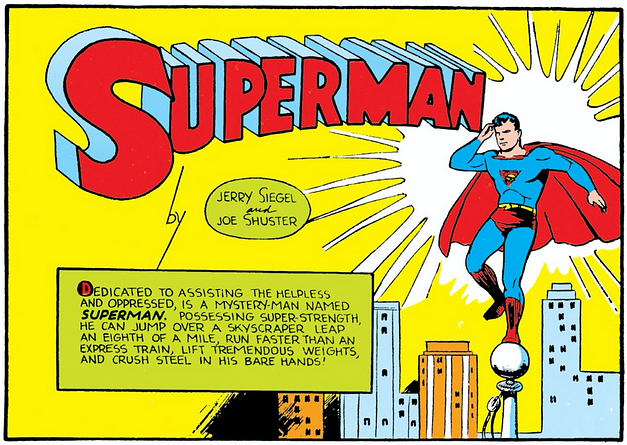
The people who argue that superheroes existed before Superman usually point at rich white men from Christian backgrounds who used masks, pseudonyms, and hand weapons to fight for justice. Two of the most famous, the Scarlet Pimpernel and Zorro, were noblemen. Three were millionaires: The Shadow was a “wealthy, young man-about-town”, the Lone Ranger’s silver mine let him use silver bullets as casually as others used lead, and the Phantom’s predecessors had been acquiring riches for centuries that let him go where he was needed. Except for their wealth, these pseudonymous white men were as human as anyone—only superstitious people thought the Phantom was 400 years old, and the Shadow’s hypnotism was something that, in theory, anyone could learn. Which may be why these characters were known as mystery men or masked men, not superheroes.
The roots of the mystery man are ancient, but Baroness Orczy established the modern version in a play in 1903 that she novelized two years later. Her hero did not wear a mask or a costume, but he had two identities, a personal one as Sir Percy Blakeney and a heroic one as the Scarlet Pimpernel.
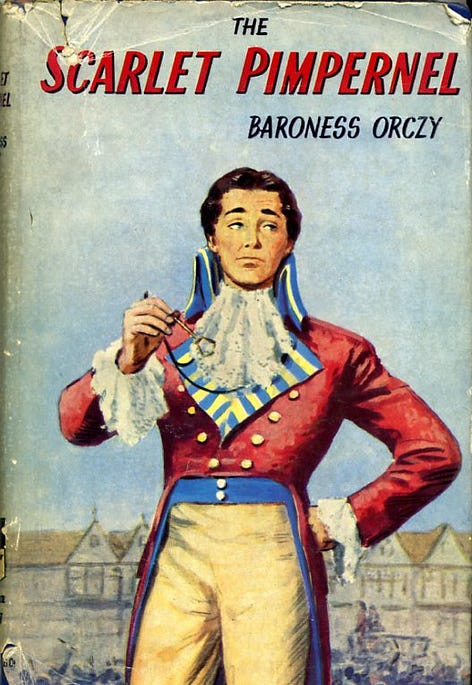
Johnston McCulley refined the mystery man in 1919 in a novel, The Curse of Capistrano. Like Sir Percy, Don Diego was a fop. Unlike the Pimpernel, Zorro wore a mask. McCulley writes:
…the man who stood straight before them had a black mask over his face that effectually concealed his features, and through the two slits in it his eyes glittered ominously.
Zorro did not wear a costume, as the cover of his first story shows:
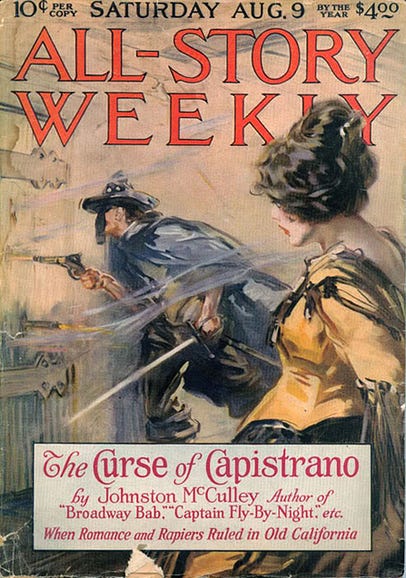
A costume doesn’t make sense for a mystery man. He only needs a bit of cloth to hide his face, something he can keep in a pocket. (In the first Zorro films and serials, the only consistent things about his appearance are dark clothes and a mask. The earliest version of the iconic all-black costume appeared in the 1940 remake of The Mark of Zorro.)
The next step in the evolution of the mystery man came in 1931. Walter B. Gibson made him modern, American, and wealthy by creating the Shadow, whose upper face, in keeping with his name, was shadowed by a broad-brimmed hat and whose lower was masked with a scarf.
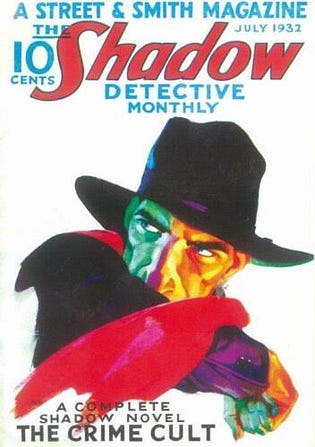
The Shadow’s success inspired more masked white millionaires with guns—in 1933, The Spider appeared in his own magazine, and in 1936, the Green Hornet starred in a radio series while the Clock became the first mystery man in a comic book.
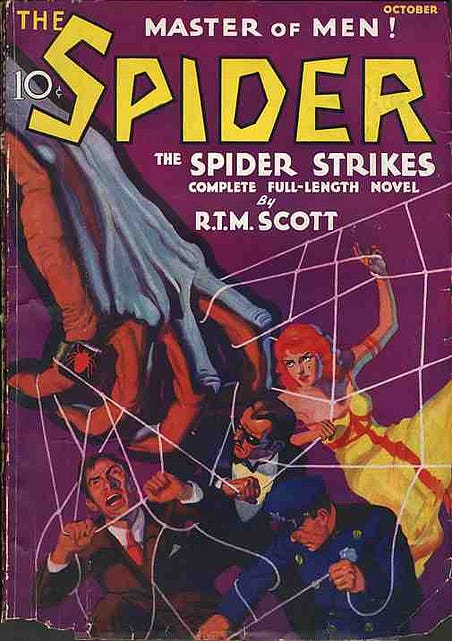
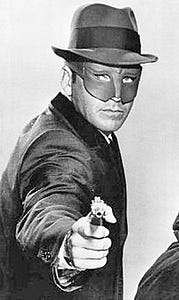
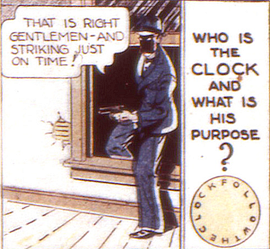
In 1933, Fran Striker expanded the possibilities for masked heroes by blending the genre with another, the western. The introduction to the Lone Ranger’s first radio adventures made that explicit:
“In the early days of the western United States, a masked man and an Indian rode the plains, searching for truth and justice.”
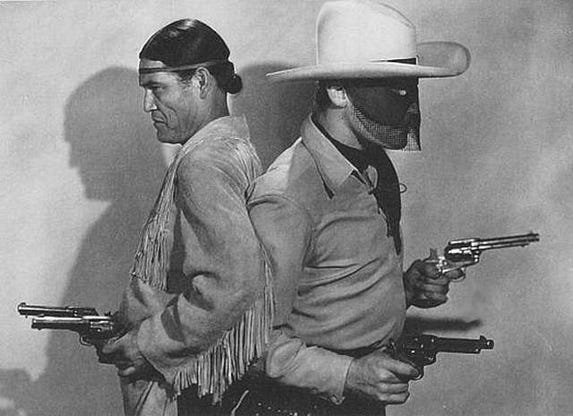
Lee Falk pushed the possibilities even further in 1936: He mixed the masked man with the jungle hero, a genre that sprang from Kipling’s Mowgli and Edgar Rice Burrough’s Tarzan. And Falk made an innovative artistic choice: The Phantom was the first mystery man to wear tights.
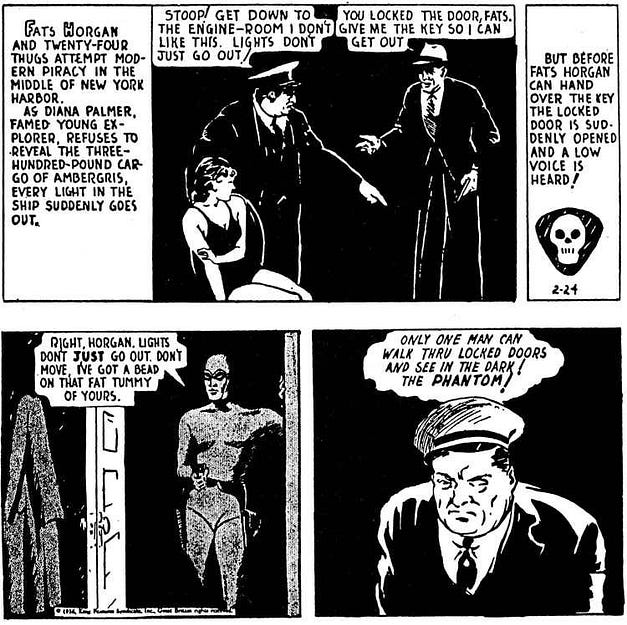
The Phantom’s costume makes some people call him the first superhero, but fundamentally, he is still a mystery man, a rich white guy with a gun and a mask. Falk said he got the idea for the Phantom’s tights from a Robin Hood movie, but I suspect there was another source of inspiration. Flash Gordon began wearing tights two years before the Phantom:
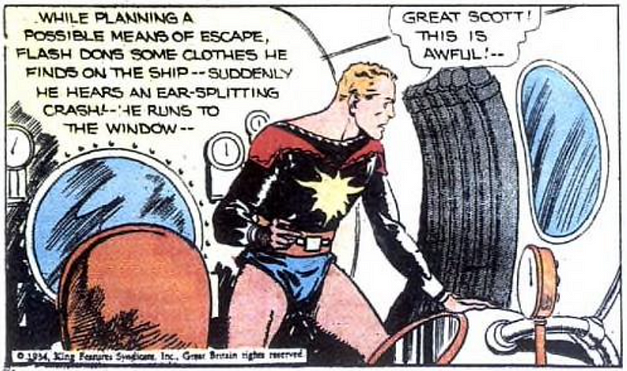
In 1938, Jerry Siegel and Joe Shuster changed everything about the mystery man except his sex. (That had been done two years earlier with the Domino Lady.)
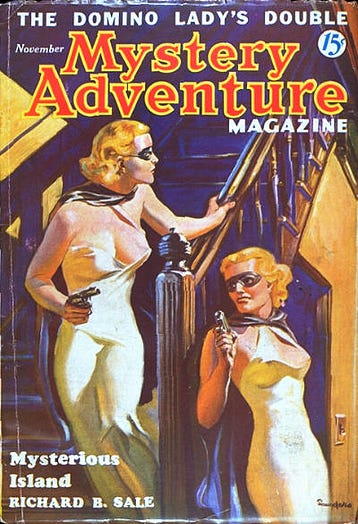
Siegel and Shuster fused the mystery man with science fiction. Heroes like Buck Rogers and Flash Gordon wore bright costumes, showed their faces, and used their own names. Many of them were different than us: Doc Savage’s father trained him from birth to be physically and mentally perfect, Hugo Danner’s mother was injected by his father with a serum that made him stronger and faster than any human, and when John Carter went to Mars, its lower gravity made him much stronger than the native humans.

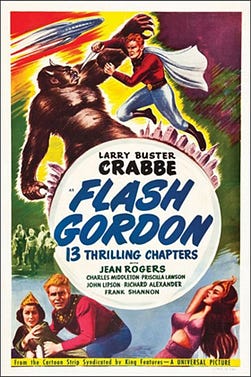
Siegel and Shuster took two elements of the mystery man genre, the mission for justice and the dual identities as an ordinary person and a hero, then added a third from science fiction, the powers that most humans could only dream of. The result was a new genre, the superhero, named for the first superhero, Superman.
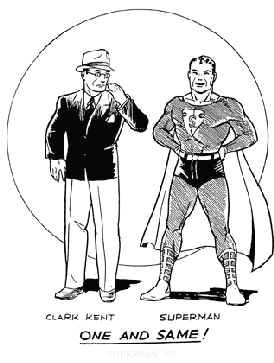
Though he was described in Action Comics #6 as “a mystery-man named Superman”, Superman was unlike mystery men in six major ways:
- Mystery men hid their faces; Superman showed his.
- Mystery men wore dark clothes; Superman wore a bright costume.
- Mystery men used weapons; Superman used his powers.
- Mystery men lived privately as millionaires; Superman lived on a working man’s pay in a time when reporting was a middle-class job. Clark Kent could have found treasure or natural resources and been a millionaire, but he chose to live as a working-class man and make the world better with the power of the press as well as his unique abilities.
- Mystery men were culturally Christian; Superman came from a planet with an advanced civilization that did not seem to have a religion. Whether Kryptonians were atheists or “spiritual” instead of religious was left to the reader, but no one thought they were Christians.
- Mystery men were descended from Europeans; Superman was not. That meant that in the race-obsessed 1930s when he was created, both Clark Kent and Superman were only passing as white—which may be among the reasons Superman became so popular with people of all races.
The comic book industry capitalized on that popularity by creating as many characters in tights as they possibly could. At least three mystery men, the Blue Beetle, the Sandman, and the Crimson Avenger, swapped their business suits for tights. New mystery men like the Arrow, the Batman, and the Green Mask began their careers in tights. (Yes, the Batman used a pistol before he made the batarang his weapon of choice.)
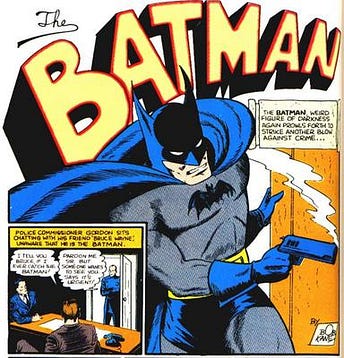
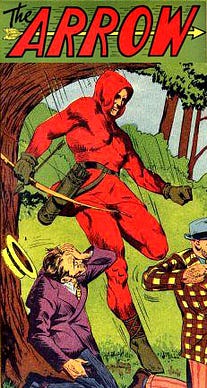
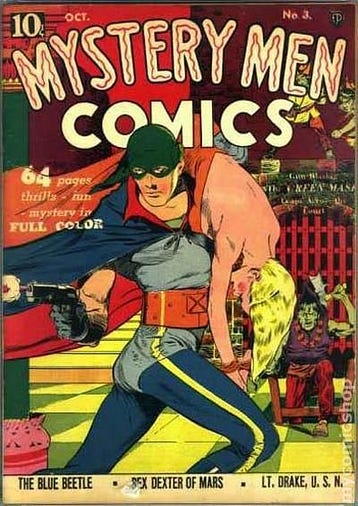
Heroes from other genres were crammed into tights too. Put magicians in tights and you get Dr. Fate and Dr. Strange. Put fantasy people like seafolk and Amazons in tights and you get Aquaman and Wonder Woman. Put cowboys in tights and you get the first versions of the Vigilante and the Ghost Rider. Put ghosts in tights and you get the Spectre and Mr. Justice. Put jungle heroes in tights and you get the Red Panther.
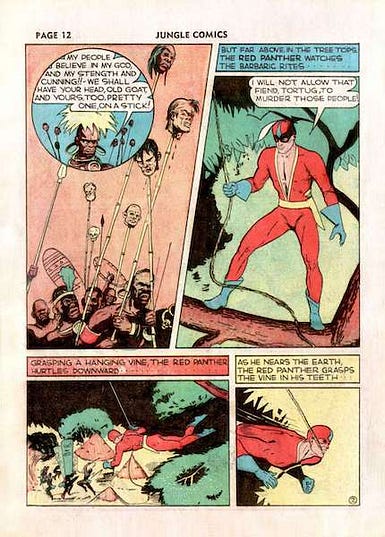
While tights have been associated with superheroes since Superman’s debut, they’re just a fashion choice. The essential elements that Siegel and Shuser chose, being super, being heroic, and having a public persona as a hero, are much more adaptable than most Superman imitators saw. It was not until 1961, two decades after Superman’s creation, that Jack Kirby and Stan Lee realized the Fantastic Four needed public personas as Mr. Fantastic, the Invisible Woman, the Human Torch, and the Thing, but their private identities did not have to be secret. And five years later, Kirby and Lee showed readers that superheroes did not have to be of European descent by creating an African version of the visitor from an advanced civilization, the Black Panther.
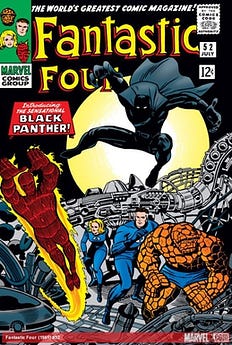
Comics Nerd notes
In 1972, Marv Wolfman and Dave Cockrum gave Krypton a god named Rao, but clearly, Rao was not important enough to Jor-El or Lara for them to put any religious items in their child’s rocket.
In 1971, Sal Amendola added Vathlo Island to Krypton and populated it with Kryptonians who looked African. Previously, readers could assume Kryptonians had interbred until they all looked like humans from Europe. The creation of Vathlo Island gave rise to a question that, so far as I know, DC has not answered: on a world with easy intercontinental travel, why were Krypton’s races segregated?
Comments
Post a Comment